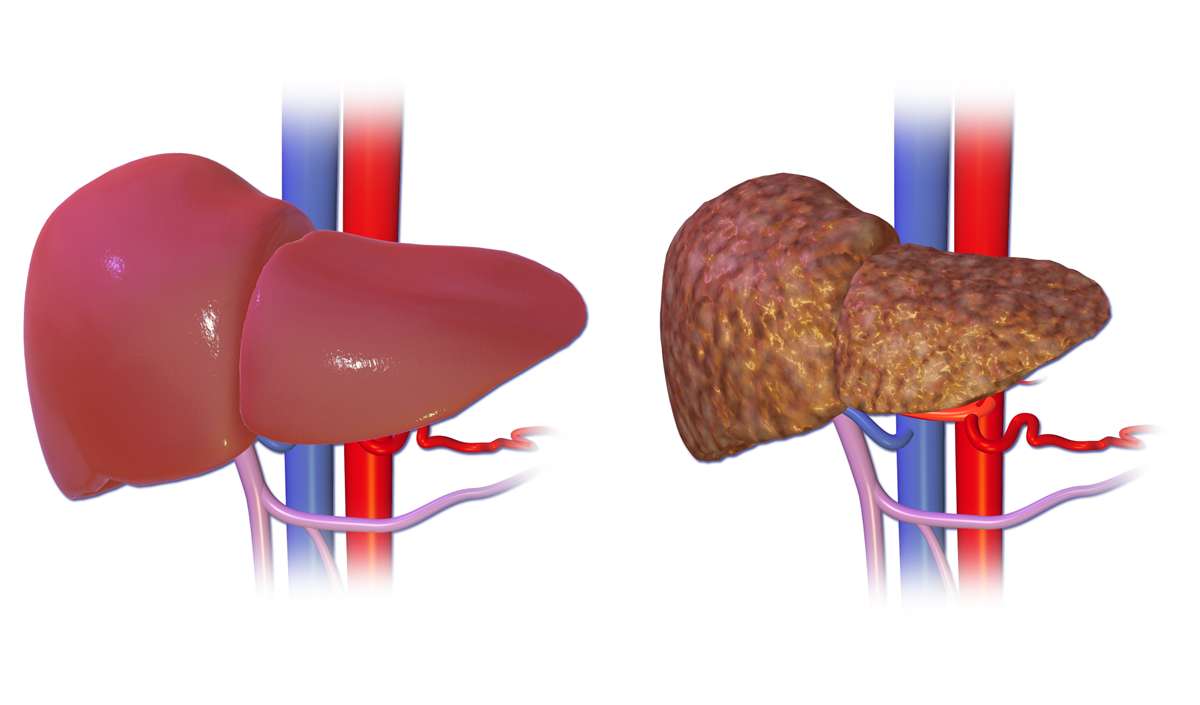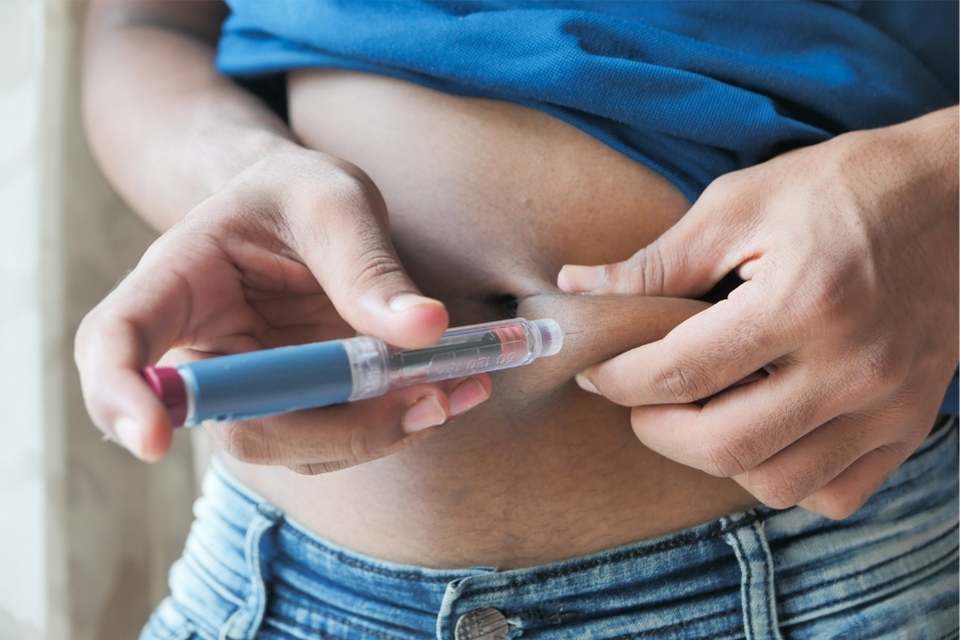Liver Cirrhosis
Cirrhosis, also known as liver cirrhosis or hepatic cirrhosis, is a condition in which the liver does not function properly due to long-term damage. This damageis characterized by the replacement of normal liver tissue by scar tissue. Typically, the disease develops slowly over months or years. Early on, there are often no symptoms. As the disease worsens, a person may become tired, weak, and itchy, have swelling in the lower legs, develop yellow skin, bruise easily, have fluid buildup in the abdomen, or develop spider-like blood vessels on the skin. The fluid build-up in the abdomen may become spontaneously infected.

Elder care
‘Jara chikitsa’ is an ancient subject being studied since thousands of years as a part of. Ayurveda is basically divided and studied under eight main branches –Kaya, Bala, Grah, Urdhwanga, Shalya, Danshtra, Jara, Vrisha. They correspondto the subjects dealing with Medicine, Pediatrics, Psychological and mental disorders, ENT ophthalmology and dentistry, Surgery, Toxicology, Geriatrics and gerontology and Reproduction related disorders respectively. So, Geriatrics and Gerontology was a full-fledged branch of the Indian traditional medical science that was studied by specialists and scholars in ancient times i.e. about 5000 years ago. Ayurveda has considered the process of ageing and the stage of old age to be ‘swabhavik’ meaning ‘natural’. Senescence occurring at chronologically right time that is the ‘Kalaj Jara’ is inevitable (Nishpratikaarya) Conditions like hunger, thirst, senescence (old age), sleep, death etc. all are the result of power of time and nature (Kaalkrit and Swabhavik). So they can only be maintained. They cannot be destroyed. We cannot get rid of them. Eating, drinking, administering rasayana, sleeping and leaving this world quietly are the deeds that can be done to manage the above said conditions.

Pain Treatment
Pain has been given utmost importance even in Ayurveda spite of recent advances in pain treatment including anesthesia, its’ management still remains challenged. Treatment modalities offered in Ayurveda such as out much untoward effects. It is hence mandatory to explore the concept of Pain and its practical utility requiring establishment in pain care reconnoitered in Ayurveda. Critical review of the previous available classical references and facts about pain, its management through conceptual study of vitiation of pain with chief therapeutic procedures such as Lepankarma & Bastikarma utilized in Ayurveda with Furthermore, brief outline has been given intervention & Yog for Pain management have also been incorporated.
The roleof dravyas in treatment of Dhatukshayjanyation helps one to comprehend the same with a new probable insight. Moreover, therapeutic procedures cited inthis article leads to pacification of Vatadosha plain on the basis of Pain sensitization mechanism. The proposed hypothesis of increased & decreased biosignaling pathways leading to Dhatukshay understanding vitiation of Vata Doshatempts to touch maximum aspects of Pain management. Vataprakopa in view of G-PCR bio-signaling of taste and Pain modul and thus, ultimately causing pain relief which are attempted to e & Margavrodhjanya vataprakopa respectively could pave the way in leading to inflammatory pathology. The topic being vast, this article a Shool, Vednasthapan.Pain's damage, or described in terms of such damage.
Pain management in Ayurveda has a holistic view which incorporates several therapeutic procedures and behavioral modifications under the light of basic principles narrated in Ayurveda. Hence, prescription writing for pain in Ayurveda is varied as Ayurveda considers pain as subjective phenomenon which includes therapy to body and mind both.

Polycystic ovary syndrome (PCOS)
Polycystic ovarian disease is a complex heterogeneous disorder of unknown etiology. It affects one in ten women. It is a condition in which patients have multiple cysts in their ovaries that occur due to disruption in the normal menstrual cycle. Ovaries get enlarged and produce excess amounts of androgen and estrogen. These hormones interfere with the growth and release of the eggs from the ovaries leading to absence of menstrual cycles and irregular menstruation. Menstrual abnormalities like infrequent, irregular or absence of menstrual cycles. Some also present with frequent cycles. Infertility Acne, male pattern hair growth on face and chest, hair fall from scalp or to high levels of male hormones. Metabolic disturbances leading to obesity, high cholesterol, hypothyroidism etc. Some patients also end up in psychological disorders like depression and anxiety due to personal stress and stress from the family.
Losing weight with PCOS is a difficult task and needs a proper guidance and follow up. It is observed that losing just 5% of the weight helps to bring the hormones in balance and thus regularize the cycles. Ayurvedic treatment includes proper panchkarma procedures along with therapies which bring in a sustainable effect thereby reversing the ill effects of PCOS and helps in weight loss. PCOS treatment in Ayurveda also includes advice about the right diet and lifestyle modifications by our doctors as per severity and individual needs required to regain your health with PCOS.

Diabetes
A medical condition in which body can’t produce enough insulin to process the glucose in the blood is known as diabetes. Diabetes has been known since the first century B.C.E., when a Greek physician, Aretus the Cappadocian, named it diabainein, meaning "a siphon," referring to the excessive urination associated with the disease. The word diabetes was first recorded in 1425, and in 1675, the Greek word mellitus,meaning “like honey,” was added, to reflect the sweet smell and taste of the patient’s urine. An unrelated and rare disorderSimilarly in Ayurveda a condition in which a person passes honey like (sweet) urine is called Madhumeha (Hyperglycemia) Reduced insulin production and decreased insulin sensitivity are the contributing factors for hyperglycemia.

It is one among 20 types of Prameha (urological disorder) described in various Ayurvedic classics i.e. Charaka samhita, Sushruta samhita, Ashtanga sangraha, Madhava nidana, Yoga ratnakara etc.Ancient seers have narrated that excess use of guru (heavy to digest), snigdha (unctous), amla(Sour) and lavana(Salt) rasa, nav!nna (food prepared from newly harvested grains), new wine, Asya sukha (sedentary life style), atinidra (excess sleep), avyayama (lack of exercise), achinta (lack of mental exercise), obstaining from samshodhana (purification) therapy are the causes of Madhumeha.
Chronic hyperglycemia is associated with significant long term sequelae particularly damage or dysfunction of various organs especially the kidneys, eyes, nerves, heart and blood vessels. Diabetes is the seventh-leading cause of death, and is on the rise, both in developed and developing countries. It is the single most important metabolic disease that affects nearly every organ/ system in the body. Today diabetes affects more than 135 million people worldwide and that number is expected to increase to 300 million by 2025. India has the largest number of Diabetes patient in the world. As per the data published by the International Diabetes Federation in the year 2006, the number of people with type 2 diabetes in India is around 40.9 million and this is expected to rise to 69.9 million by 2025. In India, about 10% elderly people aged 65 or more are suffering from diabetes.
Obesity
Obesity is a condition where a person has accumulated abnormal or excessive body fat that causes negative effects on health. For an individual, obesity is usually the result of an imbalance between calories consumed and calories expanded. An increased consumption of high calorie foods, without an equal increase in physical activity leads to an increase in weight. Decreased levels of physical activity will also result in an energy imbalance and lead to weight gain.
Once it was thought as a problem of high income countries now the problem of overweight and obesity are increasing in low income and middle income countries especially in urban areas. Since 1980 obesity has doubled worldwide. In 2014 more than 1.9 billion adults (18 years and older) and 41 million children under the age of five were overweight. Nearly half of the children under five who were overweight or obese in 2014 lived in Asia.
Overweight and obesity are emerging health problems in India. According to National family health survey India-3 (NFHS-3), thirteen percent of women (15-49 Years) and nine percent of men (15-49 Years) were overweight or obese in 2005-06. Overweight prevalence was higher in urban areas than rural areas and lower in people who are involved in agriculture or manual work.

Osteoarthrithis
Osteoarthrithis (OA) is the most common type of arthritis in both developed and developing countries. It is a chronic, progressive musculoskeletal disorder characterized by gradual loss of cartilage in joints which results in bones rubbing together and creating stiffness, pain, and impaired movement. The disease most commonly affects the joints in the knees, hips, hands, feet, and spine. The disease is associated with modifiable and non-modifiable risk factors such as obesity, lack of exercise, genetic predisposition, bone density, occupational injury, trauma, and gender.
Osteoarthritis can be classified into two groups primary and secondary. Primary osteoarthritis is a chronic degenerative disease and is related to aging. The water content of the cartilages decreases on increasing age, thus making them more susceptible to degradation. While secondary arthritis usually affects the joints earlier in life due to specific causes such as injury during a job requiring frequent kneeling or squatting for long duration, diabetes and obesity.
Osteoarthritis primarily affects the elderly population. It is a major cause of disability in older adults worldwide. According to World Health Organization (WHO) 9.6% of men and 18.0% of women ageds over 60 years have symptomatic osteoarthritis worldwide. 80% of those with osteoarthritis have limitations in movement, and 25% cannot perform their major daily activities of life.
Osteoarthritis is the second most common rheumatologic problem and it is the most frequent joint disease with a prevalence of 22% to 39% in India. OA is more common in women than men. Nearly, 45% of women over the age of 65 years have symptoms while 70% of those over 65 years show radiological evidence of OA.
